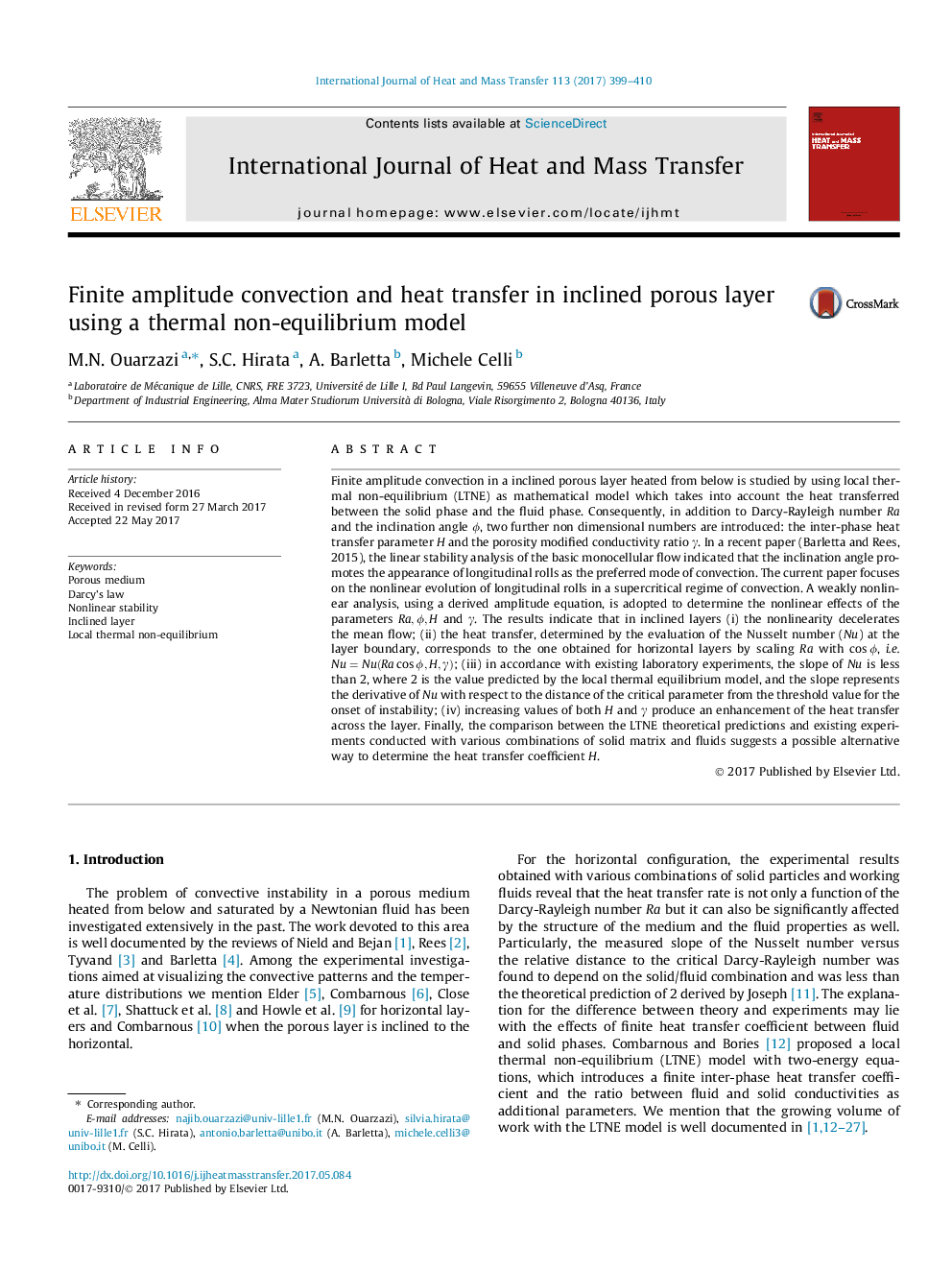| کد مقاله | کد نشریه | سال انتشار | مقاله انگلیسی | نسخه تمام متن |
|---|---|---|---|---|
| 4994185 | 1458028 | 2017 | 12 صفحه PDF | دانلود رایگان |
عنوان انگلیسی مقاله ISI
Finite amplitude convection and heat transfer in inclined porous layer using a thermal non-equilibrium model
ترجمه فارسی عنوان
انتقال حرارت دامنه محدود و انتقال گرما در لایه متخلخل لایه با استفاده از یک مدل غیرمادی حرارتی
دانلود مقاله + سفارش ترجمه
دانلود مقاله ISI انگلیسی
رایگان برای ایرانیان
کلمات کلیدی
محیط متخلخل قانون دارسی، ثبات غیر خطی، لایه تند، محلی غیر قابل تعادل حرارتی،
موضوعات مرتبط
مهندسی و علوم پایه
مهندسی شیمی
جریان سیال و فرایندهای انتقال
چکیده انگلیسی
Finite amplitude convection in a inclined porous layer heated from below is studied by using local thermal non-equilibrium (LTNE) as mathematical model which takes into account the heat transferred between the solid phase and the fluid phase. Consequently, in addition to Darcy-Rayleigh number Ra and the inclination angle Ï, two further non dimensional numbers are introduced: the inter-phase heat transfer parameter H and the porosity modified conductivity ratio γ. In a recent paper (Barletta and Rees, 2015), the linear stability analysis of the basic monocellular flow indicated that the inclination angle promotes the appearance of longitudinal rolls as the preferred mode of convection. The current paper focuses on the nonlinear evolution of longitudinal rolls in a supercritical regime of convection. A weakly nonlinear analysis, using a derived amplitude equation, is adopted to determine the nonlinear effects of the parameters Ra,Ï,H and γ. The results indicate that in inclined layers (i) the nonlinearity decelerates the mean flow; (ii) the heat transfer, determined by the evaluation of the Nusselt number (Nu) at the layer boundary, corresponds to the one obtained for horizontal layers by scaling Ra with cosÏ, i.e.Nu=Nu(RacosÏ,H,γ); (iii) in accordance with existing laboratory experiments, the slope of Nu is less than 2, where 2 is the value predicted by the local thermal equilibrium model, and the slope represents the derivative of Nu with respect to the distance of the critical parameter from the threshold value for the onset of instability; (iv) increasing values of both H and γ produce an enhancement of the heat transfer across the layer. Finally, the comparison between the LTNE theoretical predictions and existing experiments conducted with various combinations of solid matrix and fluids suggests a possible alternative way to determine the heat transfer coefficient H.
ناشر
Database: Elsevier - ScienceDirect (ساینس دایرکت)
Journal: International Journal of Heat and Mass Transfer - Volume 113, October 2017, Pages 399-410
Journal: International Journal of Heat and Mass Transfer - Volume 113, October 2017, Pages 399-410
نویسندگان
M.N. Ouarzazi, S.C. Hirata, A. Barletta, Michele Celli,
